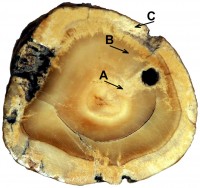 In 2001, archaeologists with the Gdańsk Archaeological Museum unearthed the largest medieval burial ground ever found in Gdańsk. It was located at the western end of a market town on a busy trade route and had been in active use from the 10th century through the beginning of the 19th. Archaeologists found approximately 1,000 graves buried over 800 years. With limited space and a lot of dead people, bodies were buried on top of each other, often damaging the earlier occupants. Construction of a church, monastery and the Market Hall also wreaked havoc on the burials. A third of the skeletal remains were badly damaged (that’s why the precise number of burials isn’t known), and some graves contained a mish-mash of disarticulated bones.
In 2001, archaeologists with the Gdańsk Archaeological Museum unearthed the largest medieval burial ground ever found in Gdańsk. It was located at the western end of a market town on a busy trade route and had been in active use from the 10th century through the beginning of the 19th. Archaeologists found approximately 1,000 graves buried over 800 years. With limited space and a lot of dead people, bodies were buried on top of each other, often damaging the earlier occupants. Construction of a church, monastery and the Market Hall also wreaked havoc on the burials. A third of the skeletal remains were badly damaged (that’s why the precise number of burials isn’t known), and some graves contained a mish-mash of disarticulated bones.
Grave number 300 was one of the latter, containing the partial remains of four skeletons that date between the mid-10th and mid-14th century: a 20-39-year-old woman, a 40-55-year-old man, a teenager and a fetus of undetermined sex. The grave also contained a kidney-shaped stone with a mottled brown and black surface that less keen eyes might have mistaken for a pebble. Upon closer examination in the laboratory, the 1.5 inch-long stone was found to be a calculus, a stone created from compressed compounds and crystals in urine. It’s not possible to determine which of the bodies interred in grave 300 were host to this painful little rock. The fetus is excluded for obvious reasons, but any of the remaining three could have produced the bladder stone.
 Sections of the stone were cut with a diamond blade and polished using diamond abrasive wheels. The section was composed of three concentric layers — an inner layer with a core, a middle layer and an outer one — of yellowish color. X-ray spectrometry of five spots on the section surface found the stone was composed of calcium, ammonium, magnesium, uric acid, oxalate, phosphate, and cystine compounds, a result confirmed by other tests as well. The results indicate that this was a bladder stone.
Sections of the stone were cut with a diamond blade and polished using diamond abrasive wheels. The section was composed of three concentric layers — an inner layer with a core, a middle layer and an outer one — of yellowish color. X-ray spectrometry of five spots on the section surface found the stone was composed of calcium, ammonium, magnesium, uric acid, oxalate, phosphate, and cystine compounds, a result confirmed by other tests as well. The results indicate that this was a bladder stone.
What’s particularly fascinating about this discovery, other than the general coolness of a medieval bladder stone, is how much it can tell us about the life of the person it inhabited.
High content of phosphate compounds suggests that the diet in this case was rich in phosphate compounds, for example in fish meat. Other animal proteins were present in trace amounts, or not at all. Consistent presence of oxalate compounds in both internal and external layers indicates that the diet, at the beginning and the end of the calculus growth, was rich in highly acidic food (e.g., sorrel plant). On the other hand, complementary EDS analysis suggested that the basic structure consisted of calcium and phosphate. The analysis did not demonstrate a sharp differentiation of Ca in the whole cross-section of the stone from the core to the cortex, and increased value of phosphorus was present in analyses of [section points] II-IV. This confirms the observations of Robertson that urinary stones are often present in societies whose diet is rich in plant products and low in meat and dairy products. It is quite possible that each phase of the stone growth was affected by negative health condition, including prolonged starvation, or other diseases, which resulted in production of alkaline urine. This condition most likely led to ascending infection to the kidneys and/or hydronephrosis with uremia.
That infection may well have killed the stone’s owner. The rough texture of the stone’s outer surface is evidence of a highly aggressive bacterial infection in the final stage of the stone’s development, an infection that was likely the cause of death.